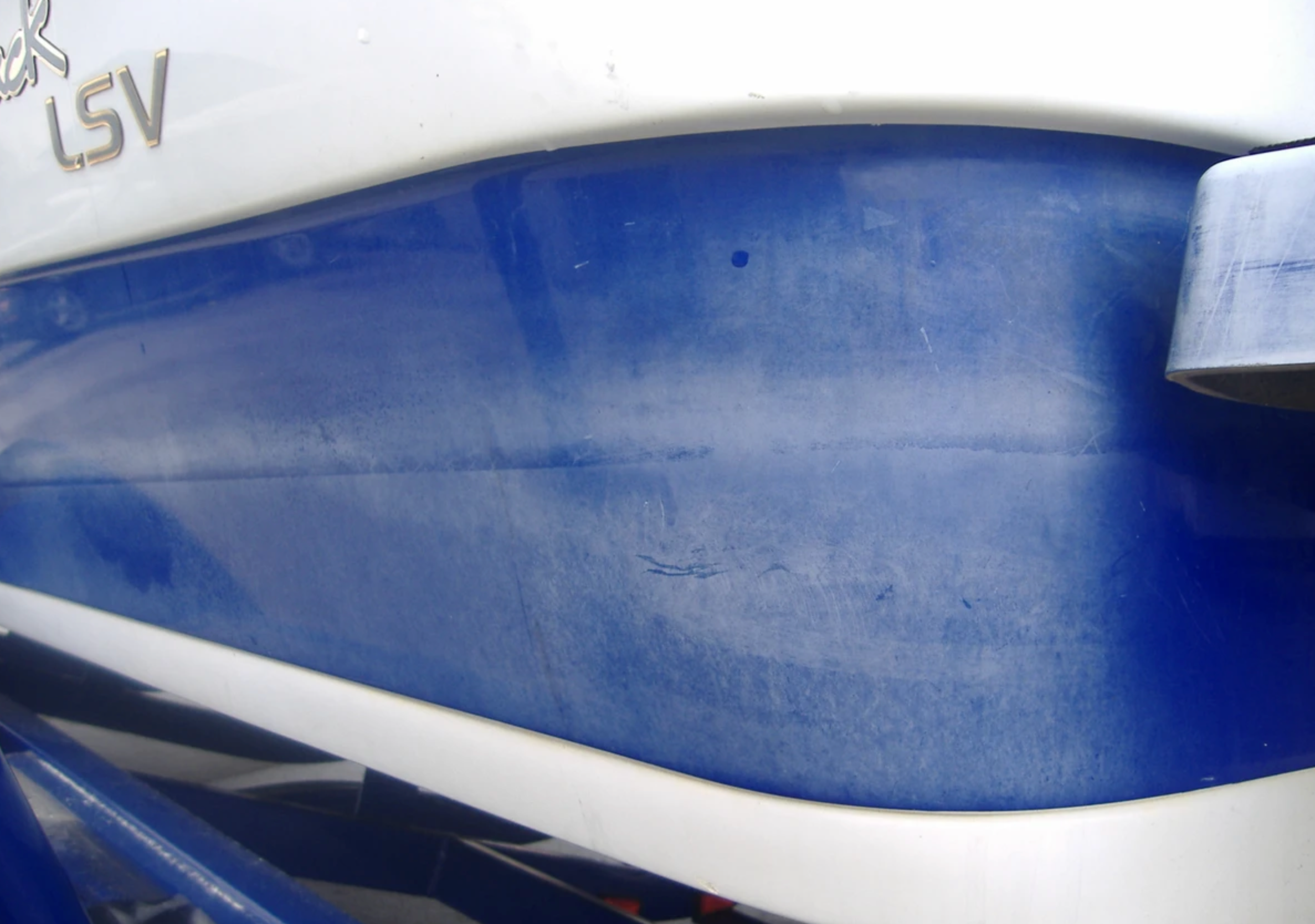⚠️ Why Gelcoat Fades (And What Early Oxidation Looks Like)
Your boat’s gelcoat is made of polyester resin—a plastic-like outer skin designed to protect the fiberglass beneath and deliver that deep, wet gloss. But it’s vulnerable.
UV rays, salt, pollutants, and air exposure trigger oxidation, which breaks the long polymer chains in the gelcoat. Over time, this leads to:
-
A chalky, white haze
-
Loss of color depth and shine
-
A surface that feels rough or porous
-
Early signs of micro-cracking or pitting if left untreated
Good news? If you're just starting to see dullness or uneven gloss, you can reverse it quickly—no wet sanding required.
🧪 The Science of Fast Gelcoat Restoration
To restore faded gelcoat effectively and safely, you need to remove the oxidized layer (not just cover it up), without damaging the intact gelcoat beneath. This requires:
-
A diminishing abrasive compound that cuts oxidation on the first pass, then polishes on the second
-
No waxes, fillers, or oils—these only mask the problem temporarily
-
A dual-action or rotary polisher for even results and heat generation
🔧 Step-by-Step: How to Bring It Back Fast (In 1 Afternoon)
✅ Step 1: Wash and Decontaminate
Use a pH-neutral boat soap to remove salt, grime, and sunscreen residue. Rinse thoroughly and dry the surface.
Optional: Use a prep spray or mild solvent to remove embedded contaminants like oily residues or silicone buildup.
✅ Step 2: Apply a High-Purity One Step Compound
Look for a marine-grade diminishing abrasive designed for oxidation removal.
We recommend:
🔹 SKWOL Oxidation Remover One Step Compound & Polish – made with high-purity aluminum oxide, no fillers, oils, or gloss agents.
-
Use a medium or heavy polishing pad
-
Apply 4–5 pea-sized dots of compound to the pad
-
Work a 2' x 2' area at a time
-
Run the polisher slowly (speed 3–5 on DA) until the compound turns clear
💡 The abrasives start aggressive, then break down into finer particles, polishing to a mirror finish as you work.
✅ Step 3: Inspect and Repeat if Needed
Wipe away the residue with a clean microfiber towel. If any haze remains, hit it again with light pressure—no need to reapply compound if the pad still has residue.
✅ Step 4: Lock It In with Protection
Once the shine is back, protect it immediately.
-
Apply a ceramic spray sealant or UV protectant to block future UV damage
-
For vinyl and rub rails nearby, use a non-greasy, non-silicone UV protectant to prevent mold and discoloration
⏱️ Why Time Matters: Oxidation Moves Fast
If left untreated, oxidation penetrates deeper into the gelcoat matrix, eventually requiring wet sanding or even full re-gelcoating to correct. That’s expensive, labor-intensive, and totally avoidable.
Catch it now, and you can restore your shine in under an hour per section.
🚤 Your Boat Deserves Better Than Chalky Gelcoat
Don’t let the sun win. A few simple steps with the right compound and protection will bring your gelcoat back to life—and help it stay that way for the rest of the season.
Ready to reverse oxidation fast?
🔗 Check out these three products to keep your finish afloat:
• Oxidation Remover One Step Compound & Polish
• Ceramic Top Coat Spray Sealant
• pH Neutral Wash & Prep Boat Soap



Share:
Why Late Summer Sun Is Worse for Your Boat Than You Think